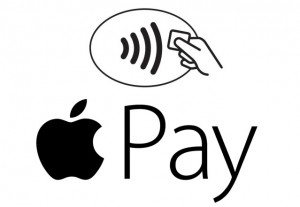Choice and added-value keys to adoption of alternative payment methods

When it comes to checkout and payment, new technologies are abounding and retailers across all industries are trying to keep up. Whether it’s payment via a mobile wallet, mobile app or emerging in-vehicle payment technologies for fuel, the options continue to increase.
Convenience store operators and fuel retailers are responding to the changes with upgraded mobile apps, wider adoption of the various mobile wallets available, and both Shell and Chevron in the United States are now offering in-vehicle payments, with Shell partnering with General Motors and Chevron with Honda. Others are following Amazon’s lead and offering cashierless checkout for a frictionless experience.
But how can c-stores here in Canada gain greater consumer adoption of their new, alternative checkout offerings?
The key is to offer added value and a reason to use the technology besides just payment, according to Kevin Grieve, North American payments lead at Accenture, a consulting firm based in Dublin.
“Mobile payment is the end game, but it’s taken longer to adopt... because there has not been enough value provided by the solutions,” Grieve told Convenience Store News. “There are multiple payment methods — whether it’s a retailer’s own mobile app, Apple Pay, Google Pay or Samsung Pay — and people will align with what provides the most value to them.”
For c-store chains with their own branded mobile app, adding more than just payment ability will be key to converting customers and driving usage, he said, pointing to Starbucks as a best-case example. The coffeehouse chain connected its loyalty program to its mobile payment, which helped drive usage. Starbucks also added mobile ordering to allow people to pay before even entering the store.
“Consumers will drive demand, but this is where the future is headed and c-stores should get into it now. Do the pilots and tests, and get the customer feedback to know what works and what doesn’t,” Grieve advised. “At one point, Starbucks had no drive-thru and now, they don’t open a Starbucks without them because it’s what consumers wanted.”
Many c-store chains are adding loyalty programs into their branded apps, along with mobile payment. For example, Shell worked with General Motors (GM) to integrate its Shell Pay & Save program into GM’s in-vehicle payment system, and also offers this integration though its own branded app.
Even those offering mobile self-checkout for a frictionless experience are including loyalty in the mix. 7-Eleven Inc. announced a pilot of mobile self-checkout that work through the 7-Eleven app, and the retailer integrates its 7Rewards loyalty program into the process.
Those c-store operators using Skip, a third-party app that enables frictionless mobile self-checkout, also have the ability to link to a loyalty program.
Going forward, offering value will be even more important as more payment methods surface and competition heats up between apps and payment technologies.
If an app doesn’t offer a relevant experience — not just payment — it isn’t likely to last, according to Patrick T. Raycroft, a consultant at W. Capra Consulting Group in Chicago, who specializes in c-store, petroleum, QSR and specialty retail, as well as digital commerce technologies. “Just being able to pay on the phone doesn’t do it the way people anticipated.”
And it’s important to offer multiple checkout and payment options to customers so that they can choose which works best for them. Allowing for Apple Pay, Chase Pay, Google Pay and more provides convenience and ease, which is what today’s consumers are looking for when shopping.
